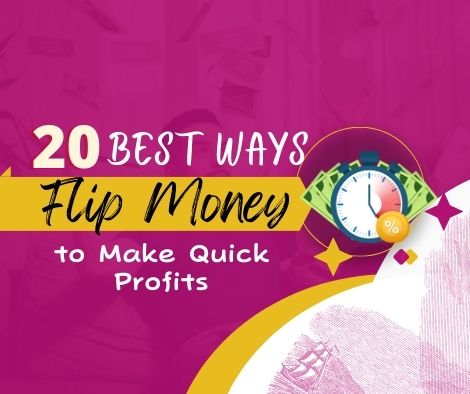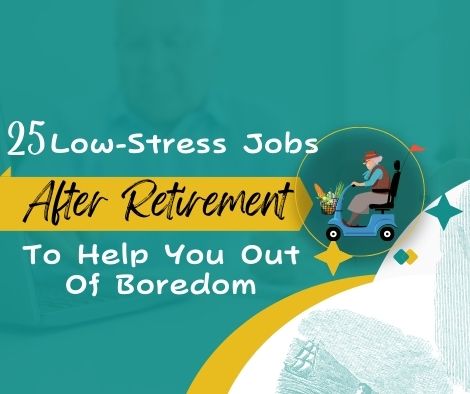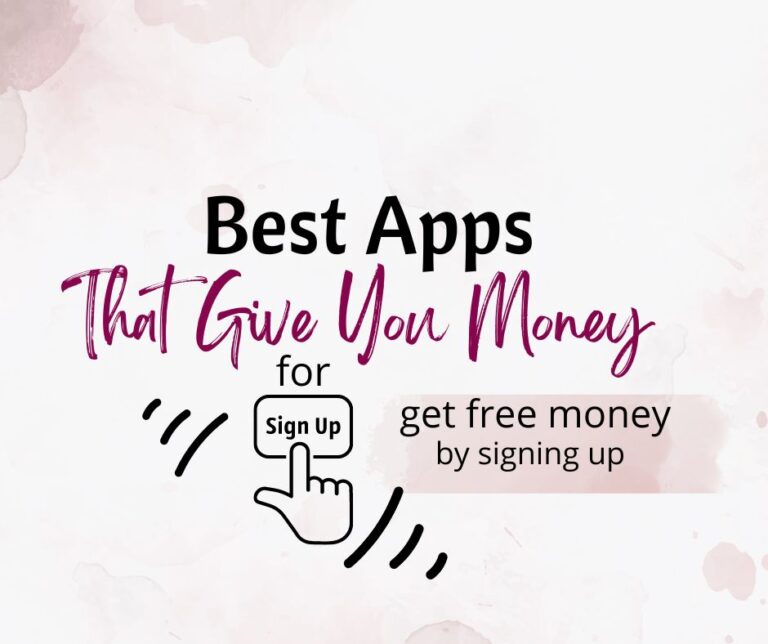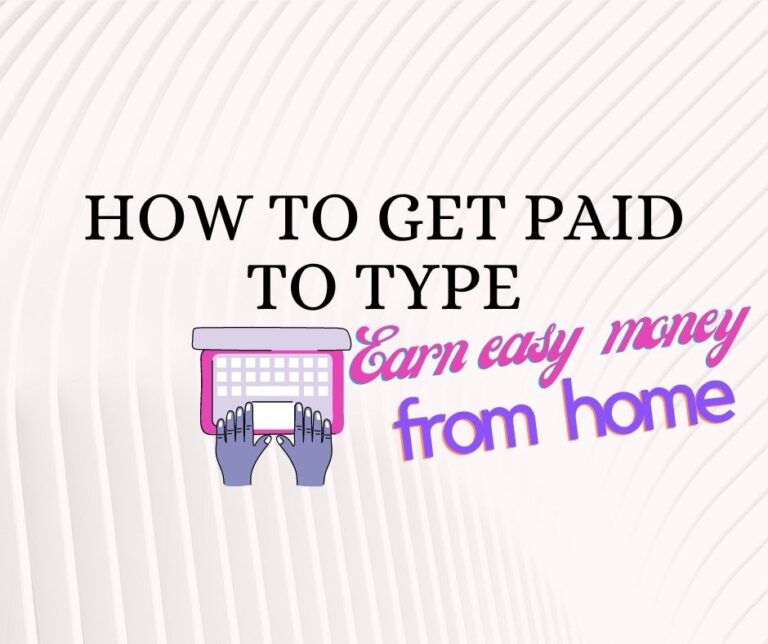How to Make Money on YouTube as a Kid [10 Best Ways]
Learn how to build a successful YouTube channel and make money from it as a kid.
If you are looking to become a successful kid YouTuber, you should keep reading.
You may be wondering, “Can kids make money on YouTube?” The short answer is yes!
Many young people are taking advantage of social media and earning impressive income by being influencers and creators. You may think the industry is saturated, but you’ll find a spot with your name on it if you go about it correctly.
So, if you are thinking of how to make money on YouTube as a kid, you have come to the right place. We will walk you through everything you need to know about earning on YouTube.
How Old Do You Have to Be to Be On YouTube?
In the kids’ best interest, YouTube places an age restriction, with the minimum age for YouTube channels at 13 years. However, regardless of a child’s age, they can start a channel and use YouTube’s services as long as a parent enables them.
So, the answer to “Can a 13-year-old make money on YouTube?” is yes. A parent or guardian just needs to create the account for the child.
In the case where the child is under 18, YouTube puts the kids in the care of their parents, allowing them to be responsible for their child’s activity on the platform.
What is YouTube Made for Kids?
YouTube Made for kids was a measure taken by YouTube to protect kids’ privacy following the allegations against it for violating the Children’s Online Privacy Protection Act. Regardless of location, it mandates creators to state whether their videos are made for kids.
However, made for kidsYouTube turns off several features like comments, notifications, memberships, live chat, and discoverability by search. These restrictions make YouTube kid’s monetization relatively more complicated.
Can Kids Make Money on YouTube?: 10 Easy Ways You Need to Check Out
1. YouTube Partner Program
Do kid YouTubers get paid? Of course, they do. The YouTube Partner Program is like a golden ticket to several money-making possibilities. Once you have confirmed your eligibility for the program, you may begin earning through ad revenue, designing membership programs, and donations when you livestream.
You also get other cool features like copyright protection on your videos, insights from YouTube analytics to help you easily learn what is working and what isn’t, and sponsored content deals.
There’s a lot to gain from joining the YouTube partner program. However, you can only access it if you meet the eligibility requirements.
These requirements are 1,000 subscribers with 4,000 watch time hours in the past year or 1,000 subscribers with 10 million Shorts views in the past three months. If you wonder how to make a kid’s YouTube channel successful, you will find some helpful tips as you keep reading.
Other criteria you need to join the program include living in a country where it is available, having an AdSense account (Check how to sign up for Adsense under 18), and adhering to the YouTube channel monetization policies.
2. Super Chat and Super Stickers
Enabling Super Chat and Super Stickers during live chat or premieres with your audience is another way to tap into a new income stream. These features include highlighted chats and animated images to help your viewers stand out.
To enable Super Chats and Super Stickers, visit YouTube Studio, go to the left menu, click on “Monetization,” and locate “Supers” at the top before clicking on “Get Started.”
Then, follow the provided information. After that, it will be available in your live chats, allowing viewers to see a dollar sign symbol.
Viewers watching a live stream or premiere with live chat enabled can purchase a super chat or animated super sticker that stands out and gets pinned to the top of chat for a set period. The bigger the purchase amount, the more the message stands out and the longer it stays at the top of the chat.
If you are curious, thinking, “ How old do you have to be to be a YouTuber” who can activate Super Chat and Super Stickers?” YouTube requires you to be 18 years old.
In addition to being 18, there are other requirements a creator must meet to enable these features. However, even if you are under 18, you are clear if your parent or guardian creates and manages your account.
3. License Your Content
Your videos are protected under copyright law, which discourages infringement by other parties. However, there are arrangements where you may permit others to use your video. One of these arrangements is known as licensing.
Licensing involves giving certain rights to specific people over your videos. So, these people have permission to use your videos in your licensing agreement in ways that would’ve constituted an infringement if not for the agreement.
You can license your quality videos as stock footage for films, allow individuals and companies restricted usage of your videos for a fee, or sell your content to publishers.
Of course, you should let your parents or guardians handle the negotiations and contracts.
4. Affiliate Marketing
Affiliate marketing is another way to join other kids in making money on YouTube. However, you must tread cautiously and include your parents every step of the way.
You will need to research brands in your niche or a similar niche that aligns with your values and audience. Your research should also cover finding out if they have affiliate programs you’ll be interested in.
If anyone interests you, reach out to these brands with the help of your parents and try to reach an agreement.
Then, you can review their products or services on your channel, and include links to shop their products or use their services. If the brand bags a sale from a customer using your link, you get a commission.
5. Sponsored Videos
Making sponsored videos involves collaborating with brands to help them reach a wider audience, after which the brand compensates you.
You can reach out to brands you genuinely believe have great products you want to introduce to your audience. To do this, you’ll need a portfolio to sell yourself to the brand—it should include information like your bio, target audience, and watch time hours.
It is also normal for brands to reach out to you once they notice you have the audience they want to reach.
There will be negotiations, planning, discussing ideas, and perhaps several edits to produce good content. Once both parties are satisfied with the content, it can go live.
A tip is to make your sponsored video align with your content and look as natural as possible. However, you’ll have to disclose the relationship between you and the brand to your audience.
6. Merch Sale
A great way to make money as a kid on YouTube is to sell merchandise, whether branded t-shirts, sweatshirts, posters, accessories, or ebooks. However, you can’t do this when you set your channel’s audience as “Made for Kids” or when many of your videos are “Made for Kids” videos.
Once you decide to start selling branded items, it’s great to discuss it with your parents. Then, you can brainstorm everything that goes into selling merchandise, from the production to the online store you will sell them.
You can even collaborate with other YouTube creators you know your audience will be excited to see, and create exclusive items.
7. Offer Memberships
Channel membership programs involve viewers paying a monthly fee to enjoy members-only benefits like badges and access to special live streams. As a creator, it is best to honestly communicate the perks enjoyed by members and how you plan to use the membership to improve your channel (if that’s the case).
It may take a while to achieve because YouTube requires creators to have at least 30,000 subscribers and be a YouTube Partner Program (YPP) member.
There is also the requirement to be at least 18 years old to run a membership program. However, kids can still offer these programs if they collaborate with their parents or guardians.
8. Make Guest Appearances
Once you have established yourself as an authority in your niche and have an impressive following, other YouTubers may contact you for collaborations or to make a guest appearance in one of their videos.
Ensure that the person you collaborate with shares your values and that it’s a great collaboration that will benefit your audience too.
Collaborating or making guest appearances can earn you compensation or a portion of the revenue generated by the content.
9. Crowdfunding
Many YouTubers generate revenue by soliciting donations. Some do that to have income for their channel’s everyday running, while others fund important channel-related projects.
To get started, you will need to involve your parents and set up a crowdfunding account with a platform best suited to your needs. Some crowdfunding platforms include Patreon and Kickstarter.
Your next move should be to create an impressive campaign involving great storytelling and incentives for backers. After that, launch and promote the campaign in your videos and on other social media platforms.
10. YouTube Premium Revenue
As a creator, you get a cut of a YouTube Premium user’s subscription when they watch your videos, and the process is automatic. All creators enjoy this benefit equally, and you are paid depending on your videos’ watch time.
However, you do not get to enjoy ad revenue from these subscribers because YouTube Premium provides an ad-free viewing experience.
How to Make a Successful YouTube Channel as a Kid
1. Focus on a Niche
In answering the question “How to make a YouTube channel for kids?” you must first find and focus on a niche.
Focusing on a niche is an essential step in the right direction. It can help you in several ways, from targeting the right audience to monetizing your content.
When trying to decide on a niche to focus on, do your research. Find out what kind of content successful kid YouTubers make and if it interests you.
You’ll also want to consider your strengths and hobbies because creating content doing something you love or excel at is easier. Once you have decided what to do, do your best to be consistent and create impressive content.
Creating good content with the consistency element can make you an authority on a particular topic and prepare the ground for monetization opportunities like affiliate marketing.
2. Create a Content Calendar
Having a content calendar is crucial for creators of all kinds and all ages. It helps you balance creating content and focusing on other aspects of your life.
With a content calendar, you can outline your activities and upload time. It will improve the quality and content you put out since you put a lot of thought into it, and it also helps you stay consistent and post regularly.
If you think it might restrict your creativity, it won’t. It’s okay if different plans spring up or if you must fit in an ad for a company. You can always tweak your calendar to make these changes.
3. Make Quality Videos
Watching videos in poor quality can ruin the viewing experience for anybody. So, to ensure you don’t scare off your audience with bad video quality.
You should invest in good equipment, including a ring light, tripod, and editing software. If you have a good phone, buying a camera may not be an immediate need.
Also, while it may be fun to wing it sometimes, carefully planning your content increases your delivery quality. So, brainstorm great ideas, jot down topics you would like to discuss, and perhaps use a script.
4. Use Custom Thumbnails
Thumbnails are another essential aspect of a YouTuber’s content. A thumbnail is an image that introduces your content to viewers—it previews what they are likely to expect from your video. So, yes, it is almost as important as the title of your video.
Now, YouTube automatically generates a thumbnail from your video, but that is usually a random image from your video. It may not be aesthetically pleasing.
As a thumbnail is the first thing a viewer sees when their eyes land on your video, you’ll want to ensure it looks good. You’ll need to make a custom thumbnail using editing software like Canva and Adobe Spark.
5. Trial and Error
Trial and error is an effective strategy creators use because you need to determine what content resonates best with your audience.
You may need more than research and doing what other creators do to get you where you want to be or make you stand out. Still, by watching your audience’s behavior, you’ll learn what works and what doesn’t.
Pay attention to what type of video gets the most engagement and try to replicate the magic you made happen in that video.
6. Implement YouTube SEO
YouTube doubles as a social media platform and search engine. As one of the biggest social media platforms, YouTube allows your content to be visible when people are searching, as long as you create content that tends to the searcher’s needs.
Your video should also be straightforward to follow. It all boils down to making good content because people will watch your video if they think it benefits them.
You can use tools like Ahrefs to research keywords and include them in your video title and description. You can also incentivize your viewers to watch your videos to the end by promising a giveaway or something at the end of the video. It will increase your “watch time” and open doors to monetization opportunities.
7. Interact with Your Audience
Sometimes, having 5,000 loyal subscribers is more effective than 20,000 subscribers who do not care whether you upload a new video.
Brands are also attracted to creators with a loyal following. While having an impressive following is good, it’s even better if they’re reliable.
Now, how do you get loyal followers? By connecting with them on a somewhat personal level. Engage them, like and reply to comments, ask them questions, etc.
Once you have a great rapport with your audience, they even become advocates of your brand and what you do.
8. Grow Your Audience
Creating and optimizing quality content are already great strategies to gather an audience interested in what you have to offer. However, you may need more, especially when monetizing your videos.
As a kid creator, YouTube requires you to have a minimum of 1,000 subscribers and 4,000 “watch time” hours. You will need to put in more work.
You can drive more people to your channel by promoting it on social media platforms. You can include a link to your channel on your Instagram and Twitter bio and post captivating snippets of your YouTube videos on Instagram and TikTok.
Another thing you can do to build your audience is to collaborate with other kid YouTubers, especially ones that align with your values and are in your niche.
There’s a saying, “An ally in creation is an ally in promotion.” Once you collaborate with these other creators, they help promote your videos and channel.
Safety Measures for Parents When Kids Start Making Money Using YouTube
Parent Supervision
One of the best things you can do for your kids once they get started is to supervise them. They’ll need your help every step of the way.
So, monitor their content—whether it can compromise their safety, especially when they reveal too much personal information, and whether their content is age-appropriate. You also want to ensure that their videos do not violate any rules applicable to them, whether they’re using a standard or YouTube for Kids account.
Set Privacy Settings
Since the essence of your kid creating a YouTube channel in this instance is to make money from it, you should ease up a bit on the Privacy Settings.
However, when you consider, “What age is YouTube for?”, you’ll know you need to restrict your kid’s video access and manage their comments. You can completely turn off the comments, but that might not be the best idea if you want to build a loyal audience because interactions with the audience are encouraged.
Yet, when you sign into the Google account linked to your child’s channel, you can choose their channel from the list of associated channels using YouTube Studio and locate the comments on the video by clicking on the “Comments” tab. Here, you can review, delete, report, or even prevent some types of words from appearing in your kid’s comments.
Review Videos
Before any of your kid’s videos go live, it’s best to review them. Thoroughly check the videos to see if it’s inappropriate in any way or even violate the YouTube community guidelines.
Content review by parents serves other purposes like ensuring that there are no violations of labor laws, no controversial elements, and that the quality of the video is top-tier.
Set Boundaries
When your child starts a career as a YouTuber, it is easy for them to be engrossed and make their whole life about it, especially if they have a good following and the number of subscribers keeps growing. It is your responsibility as a parent to set boundaries.
They should have a schedule that provides a proper work-life balance. You should also restrict them from using their phones after certain times of the day.
Discuss Online Safety
As the parent of a kid YouTuber, you may not be able to be there for them every time. Also, you would want to ensure they are safe, so teaching them how to be safe online is essential.
Teach them about trolls and how they may make hateful comments. Let them understand it’s unsafe to reveal personal information like where they school, and how to report inappropriate comments.
Take time to help them learn the things they need to know. You don’t need to bombard them with all this information.
Summary
We have answered the question, “Can kids make money on YouTube?” and explored how to make money on YouTube as a kid. We also recommended tips to build a successful channel and safety measures to take as a kid—use this information to launch your career!







Thanks for sharing. I read many of your blog posts, cool, your blog is very good.